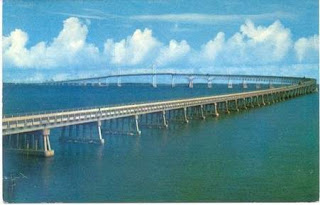Pollution - Chesapeake Bay Program." A Watershed Partnership - Chesapeake Bay Program. Chesapeake Bay Program. Web. 16 Feb. 2012. <http://www.chesapeakebay.net/issues/issue/air_pollution>. "Air Pollution and Water Quality | Total Maximum Daily Loads (303d) | US EPA." Home | Water | US EPA. Enviornmental Protection Agency. Web. 16 Feb. 2012. <http://water.epa.gov/lawsregs/lawsguidance/cwa/tmdl/airdeposition_index.cfm>.
"Blue Crab." NOAA Chesapeake Bay Office. National Oceanic and Atmospheric Administration, Jan. 2012. Web. 15 Feb. 2012. <http://chesapeakebay.noaa.gov/fish-facts/blue-crab>.
"Chesapeake Bay." Wikipedia, the Free Encyclopedia. Wiki. Web. 16 Feb. 2012. <http://en.wikipedia.org/wiki/Chesapeake_Bay>.
"Oysters - Chesapeake Bay Program." A Watershed Partnership - Chesapeake Bay Program. Chesapeake Bay Program, Dec. 2011. Web. 16 Feb. 2012. <http://www.chesapeakebay.net/issues/issue/oysters>.
"Striped Bass - Fish Facts - Chesapeakebay.noaa.gov." Environmental Education - Wetlands- Fisheries - NOAA Chesapeake Bay. National Oceanic and Atmospheric Administration, Jan. 2012. Web. 16 Feb. 2012. <http://chesapeakebay.noaa.gov/fish-facts/striped-bass>.
"WATER QUALITY ISSUES: Air Pollution." Chesapeake Bay Foundation. Chesapeake Bay Foundation. Web. 16 Feb. 2012. <http://www.cbf.org/Page.aspx?pid=519>.
"Chesapeake Bay National Estuarine Research Reserve, Maryland." Encyclopedia of Earth. N.p., n.d. Web. 15 Feb. 2012.
"Follow the Smith Trail - Southern Maryland - This is Living Magazine." Southern Maryland - This is Living Magazine. N.p., n.d. Web. 15 Feb. 2012.
"The Chesapeake Bay | The Pippa Hunnechurch Mysteries." The Pippa Hunnechurch Mysteries | America's Favorite Brit Headhunter. N.p., n.d. Web. 15 Feb. 2012. .









